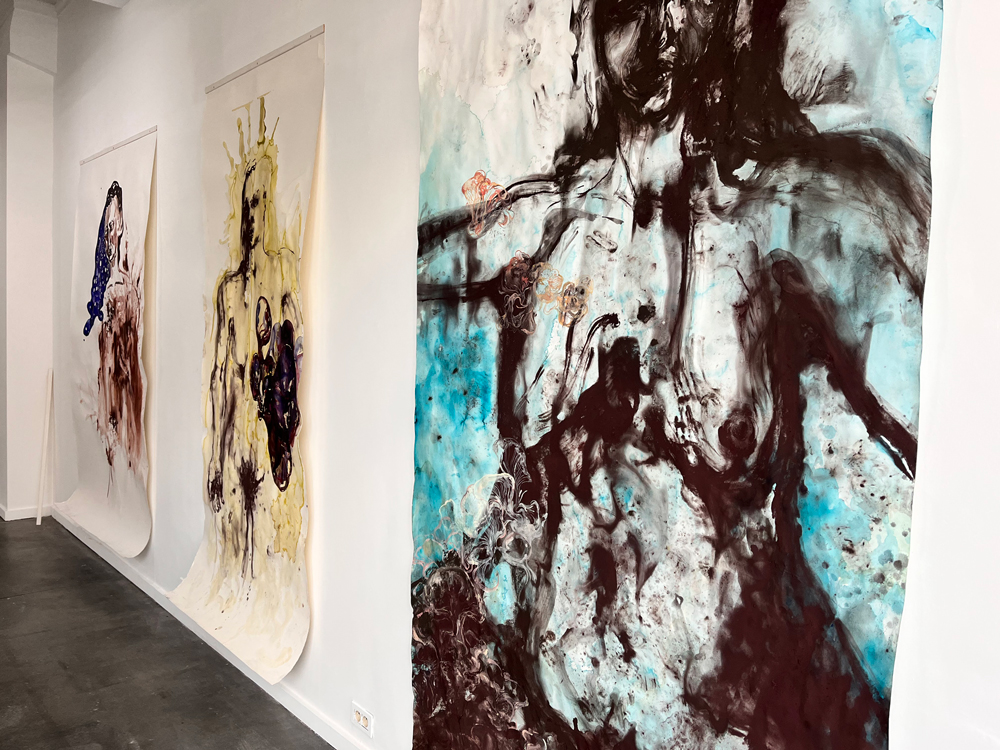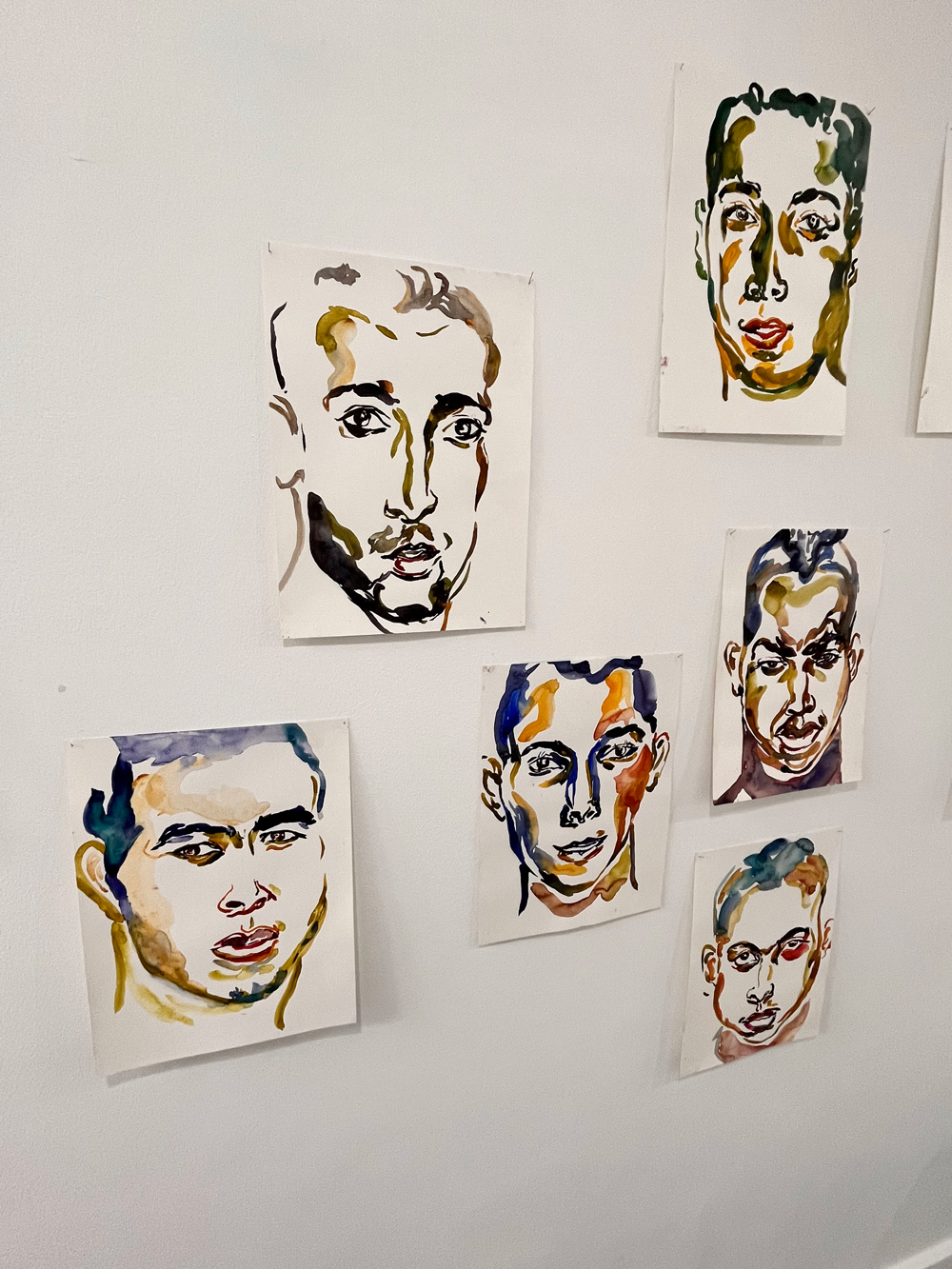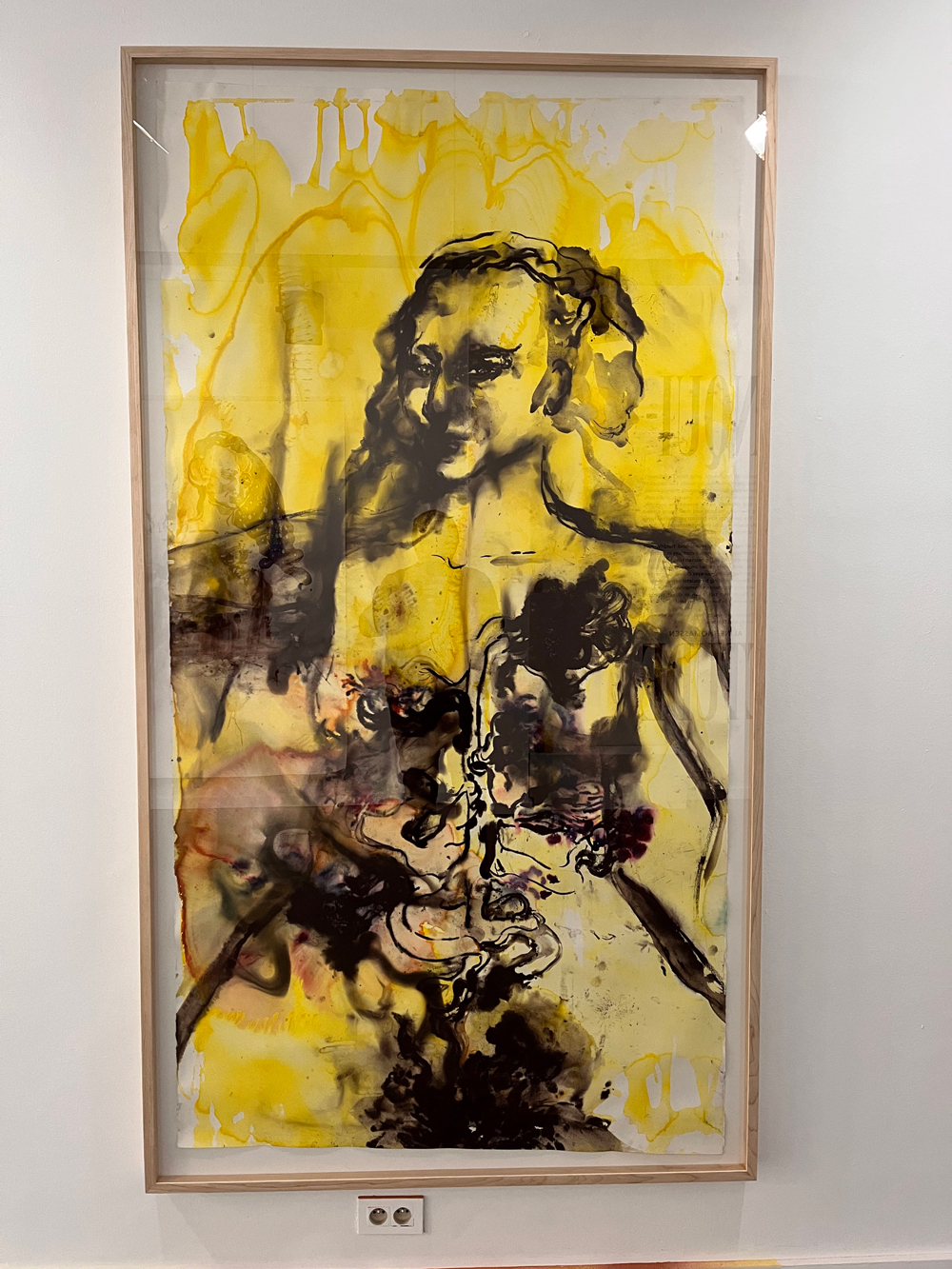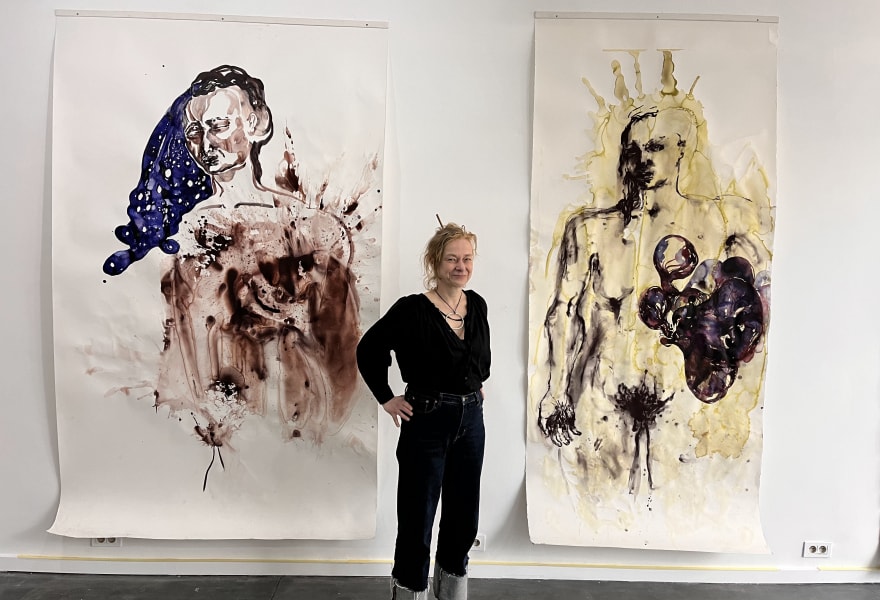04 april 2023, Yves Joris
Aline Thomassen: tempestuous silence or cruel tenderness?
Can water form an image? Does that image create a calm that penetrates deep into the heart or can the slightest ripple stir the surface into a raging storm? Should we worry about this or follow in Horace's footsteps and ‘seize the day’? Plenty of questions to ask artist Aline Thomassen, who is in the final stretch before the opening of her new exhibition Inquietude on April 6 at the NQ Gallery in Antwerp.
Aline Thomassen commutes between the Netherlands and Morocco, but for her new exhibition Inquietude, in which she presents both new and older work, she has travelled to Antwerp. When I introduce myself, she enthusiastically asks me what I think of her work. She surprises me. Shouldn’t I be the one asking the questions? She challenges me to question certainties. This happens more than once during the interview, because it is precisely what creates that creative power she is always looking for as an artist. “Stormy silence,” I mumble in response to her question, “for lack of a better definition.”

Aline Thomassen, NQ Gallery
Stormy silence
Three larger-than-life works stare at me. Three women, clearly defined shapes that elude the colourful flood of watercolour. “I switched from oils to watercolours for practical reasons. It gives my work the lightness I aim to achieve. I often work on a figure for weeks,” Aline confides in me. “This means that the figure is usually put on paper fairly quickly. For me, the woman’s gaze is absolutely defining. Once that’s right, that’s when the real work starts. I pursue a subtle play of centres of gravity that creep almost imperceptibly into the figure, onto the paper … until I feel that the work is complete, ready to be released. It is a constant search for balance between emotion and action, a magical quest. The works that appear on paper are the result of my imagination and feeling. I rarely use any other medium like photos.”
What also strikes me is that the works are only attached to the wall at the top. At the bottom, they curl up as if they have too much energy to stay put. She describes it as movement without resistance in which unrest forms the seed of her inspiration. Without unrest, there is no possibility to find standstill, to be satisfied with what is and to relinquish.
More than a quarantine
The movement that radiates from her works also continues in her personal life. When asked how she ever ended up in Morocco, she laughs and talks about a moment in her life when she was an artist-in-residence in France. On the beach, she saw a signpost with ‘Morocco’ on it. Nomen est omen and since 1994, she has been travelling back and forth between the two countries. She likes the complexity of this country. It is rarely black and white. Instead, there is a confrontation between traditions that are slowly disappearing and the everyday problems facing young people all over the world: future, work and love.
Her eyes light up when she talks about her adventures in Morocco. As we stand among dozens of faces of Moroccan men staring at us with all kinds of colours and facial expressions, she tells me about the genesis of this work. When we hear the word ‘quarantine’, we may immediately think back to the recent period that confined us mercilessly to our own homes. But that same word also refers to the everyday number of forty. And that is exactly what the work is all about. For forty days, she went to the fishing town of Larache, looking for as many men who wanted to pose for her. Distrust and suspicion were part of her in the first days, but by talking about everyday matters, she managed to gain trust. The result shows a patchwork of colour, physiognomy and expressiveness that attracted the necessary attention from the outside world. Quarantine was the name of one of the works included in her solo exhibition Cherchez la Femme at the Bonnefantenmuseum (2015).

Aline Thomassen, NQ Gallery
This museum show is not the only one on her list of achievements. Now it's my turn to surprise her with a question. How did she attract the attention of the different venues where her work has been shown? “Being at the right time in the right place and seizing an opportunity?” The interrogative way in which the answer is presented suggests that the answer is not complete. A little later, Aline adds, “The themes in my work are very human and as Stijn Huijts (general and artistic director of the Bonnefantenmuseum) said, suffering is always present. I intertwine this with a lust for life, pride and the strength to survive. People recognise themselves in my work. That is also what drives me in art: that you can share and communicate a feeling for life, the surface under everyday life, the unmentionable. In addition, I have always been looking for a different image of women, a different recipe for being human than what is forced on us from our culture. This is expressed in my work in images of women who are not busy meeting expectations, who are playing a role, who are not in someone else's field of power.”
Later that evening, author Hafid Bouazza takes me through the old medina of Laracha in his essay “The Moroccan bodies of Aline Thomassen” from the book The wound is the place where the light enters you. He describes her oeuvre as one of cruel tenderness. I wonder whether he had also noticed a tempestuous silence in Thomassen’s work and let Morpheus take me to the village I had just read about.

Aline Thomassen, NQ Gallery
